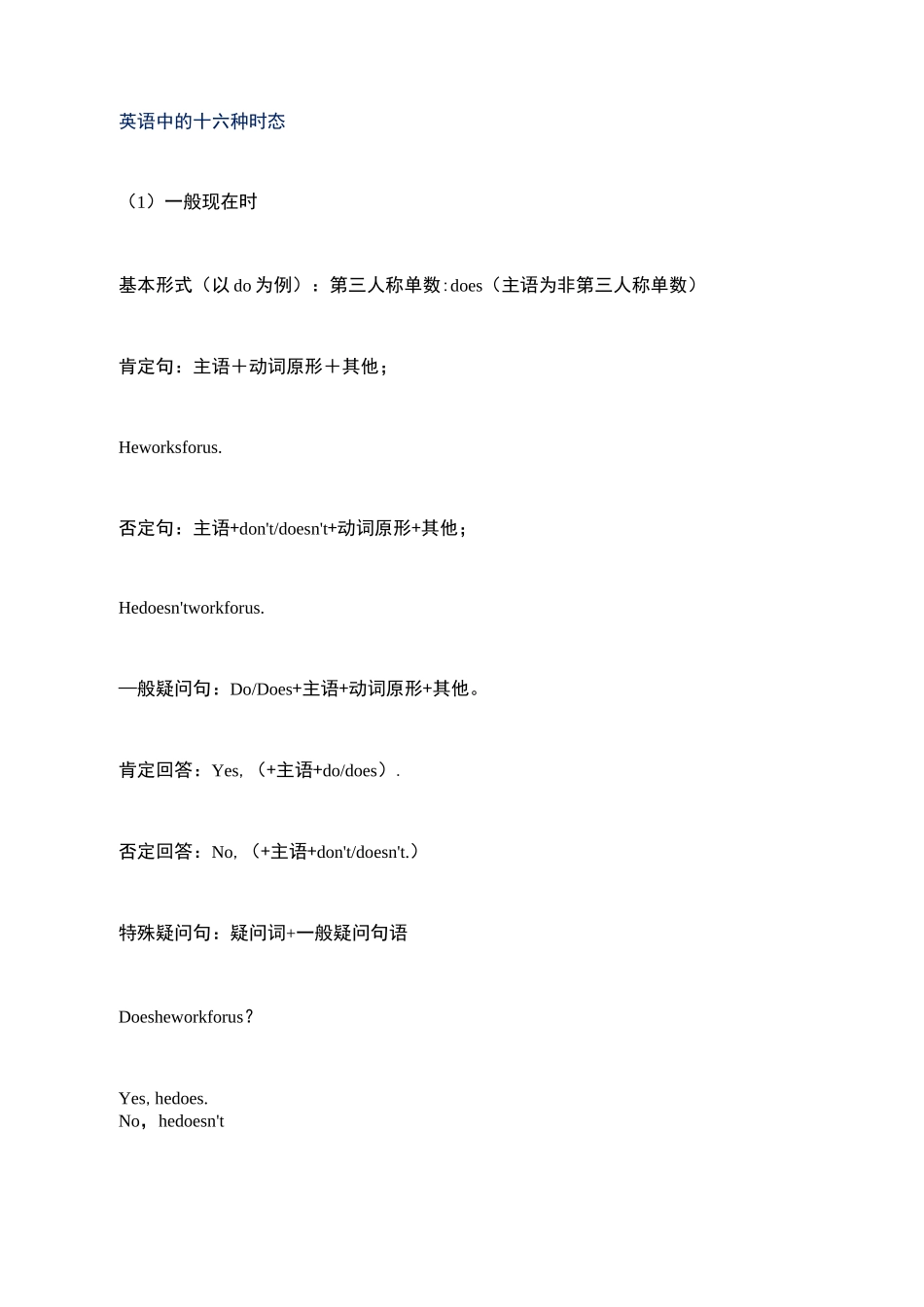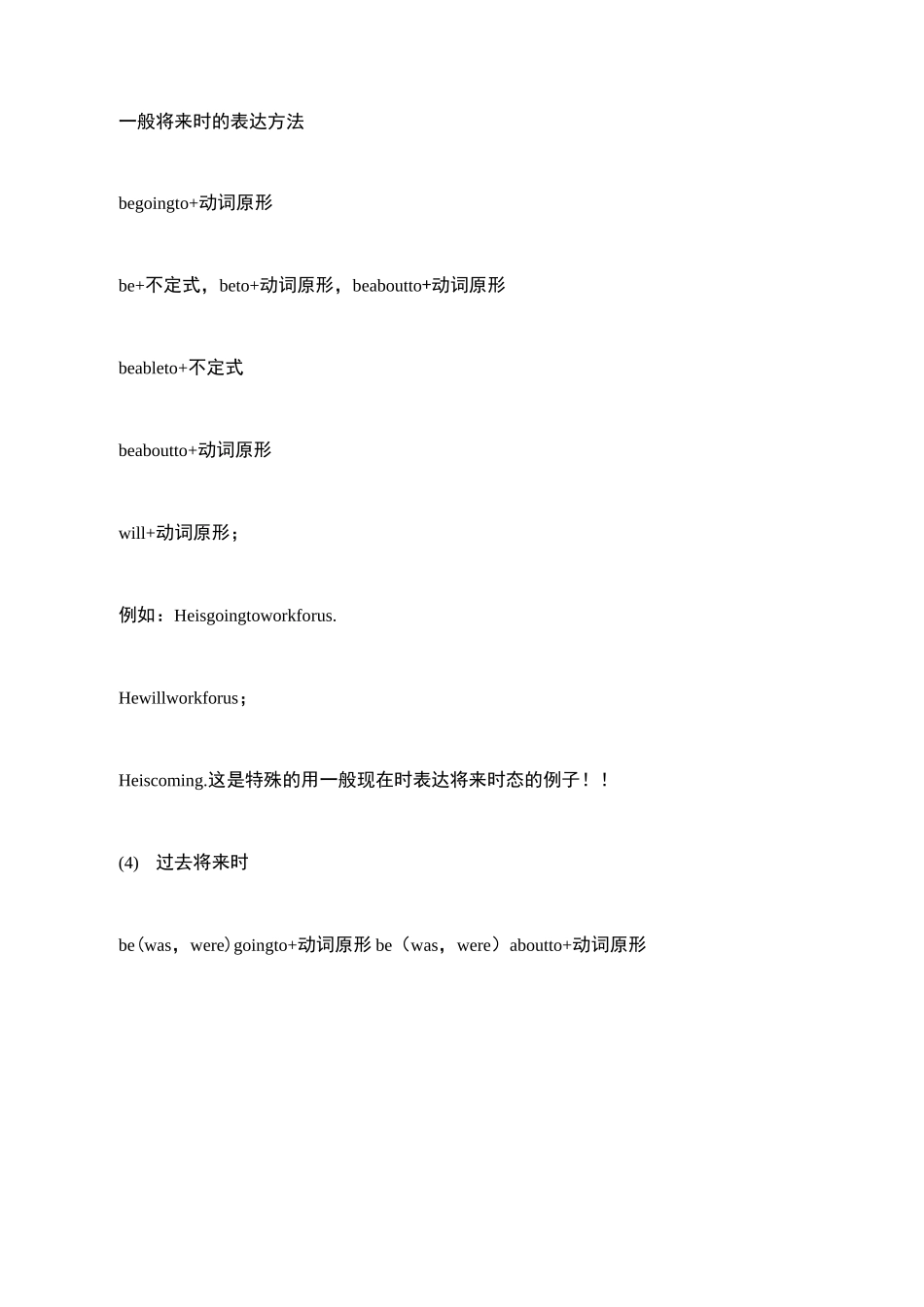英语中的十六种时态(1)一般现在时基本形式(以 do 为例):第三人称单数:does(主语为非第三人称单数)肯定句:主语+动词原形+其他;Heworksforus.否定句:主语+don't/doesn't+动词原形+其他;Hedoesn'tworkforus.—般疑问句:Do/Does+主语+动词原形+其他。肯定回答:Yes,(+主语+do/does).否定回答:No,(+主语+don't/doesn't.)特殊疑问句:疑问词+一般疑问句语Doesheworkforus?Yes,hedoes.No,hedoesn'tWhatdoeshedoforus?Heworksforus.(2)一般过去时be 动词+行为动词的过去式否定句式:在行为动词前加 didn't,同时还原行为动词,或 was/were+not;was 或 were 放于句首;用助动词 do 的过去式 did 提问,同时还原行为动词例如:Didheworkforus?Hedidn'tworkforus.Heworkedforus.(3)一般将来时am/are/is+goingto+do 或will/shall+doam/is/are/aboutto+doam/is/areto+do;一般将来时的表达方法begoingto+动词原形be+不定式,beto+动词原形,beaboutto+动词原形beableto+不定式beaboutto+动词原形will+动词原形;例如:Heisgoingtoworkforus.Hewillworkforus;Heiscoming.这是特殊的用一般现在时表达将来时态的例子!!(4)过去将来时be(was,were)goingto+动词原形 be(was,were)aboutto+动词原形be(was,were)to+动词原形肯定句:主语+be(was,were)goingto+动词原形~.否定句:主语+be(was,were)notgoingto+动词原形~.疑问句:Be(Was,Were)+主语+goingto+动词原形~?肯定句:主语+would(should)+动词原形~.否定句:主语+would(should)not+动词原形~.疑问句:Would(Should)+主语+动词原形~?Hewouldworkforus.(5)现在进行时主语+be+v.ing〔现在分词〕形式(其中 v 表示动词)表示现在正在进行的动作或最近在做的事。例如:Iambuyingabook.第一人称+am+doing+sth第二人称+are+doing+sth(doing 是泛指所有的 v-ing 形式)第三人称+is+doing+sth例:Heisworking.(6)过去进行时肯定句:主语+was/were+doing+其它否定句:主语+was/were+not+doing+其它—般疑问句及答语:Was/Were+主语+doing+其它;答语:Yes,I 主语+was/were./No,I 主语+wasn't/weren't.特殊疑问句:特殊疑问词+was/were+主语+doing+其它Hewasworkingwhenhewasalive.(7)将来进行时主语+will+be+现在分词Hewillbeworkingforus.=Hewillworkforus.(8)过去将来进行时 should(would)+be+现在分词Hesaidthathewouldbeworkingforus.=Hesaidthathewouldworkfor...


